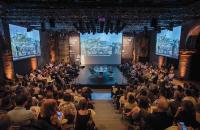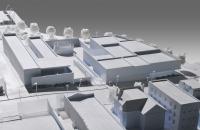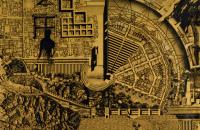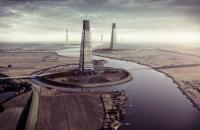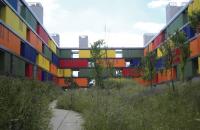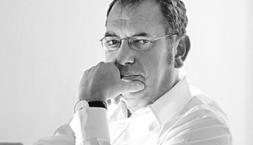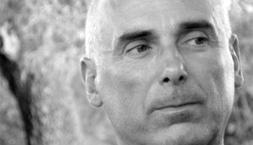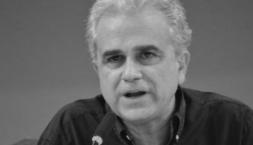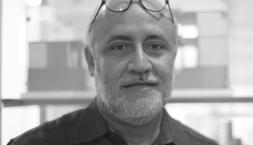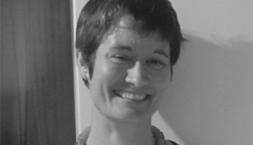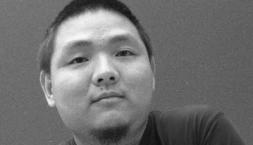Professor in Residence, Department of Architecture, GSD, Harvard University, Cambridge MA, USA
Issue's articles
In This Issue [1/2016]
VOLUME 1/2016 - Issue 1 , Pages: 5 - 6 published: 2016-10-21The Transformative Power of Urbanism. The Urban Age Conference, Venice Biennale (July 2016)
VOLUME 1/2016 - Issue 1 , Pages: 119 - 128 published: 2016-10-14As the world population is increasing at unprecedented rates and wastelands are extending at a variety of new scale and in various spaces organizing the sprawling landscape, the line between formal and informal settings, God’s eye view planning walled off from the outside world and temporary structures seems to intensify. There is an urgency to reverse such inefficient growth with its consequent inhuman conditions and better plan world’s cities by means of urbanization. The Urban Age “Shaping Cities” Conference at the Venice Biennale (July 14-15, 2016) with the exhibition Conflicts of an Urban Age explored the connections among the political, economic and social city with the scale of its physical and urban form. Addressing themes such as expansion, redevelopment, adaption and confronting speakers and urban solutions from different backgrounds, the conference questioned the role of planning in the definition of more inclusive, safe, resilient and sustainable cities. The theme reconnects to Habitat III, the UN global cities summit set for Quito, Ecuador, in October 2016 implementing the New Urban Agenda for the world’s rapidly urbanizing areas.
Art Walk / Bridging Urban Spaces
VOLUME 1/2016 - Issue 1 , Pages: 59 - 72 published: 2016-09-26The Art Walk project is a stitched landscape that joins several art and media institutions in Grand Center, St. Louis. The current condition of Grand Center allows few moments of connectivity and sense of continuity between urban spaces. The project is divided into four multi-cultured zones that are currently separated by parking lots, pedestrian inaccessible easements, and gated buildings. The urban strategies are part architecture, art, and industrial design elements. They interface with landscape planning to engage the public in multiple scales of activity in order to bridge between discreet urban spaces.
Urban Hacking. A Nobel Project for the Redundant City
VOLUME 1/2016 - Issue 1 , Pages: 99 - 118 published: 2016-07-27In 1963, Constantinos Doxiadis, Buckminster Fuller and Marshall Mc Luhan signed, among others, the little known “Delos Declaration,” which alerted the world that the “problem of expanding urban area may soon outstrip all other problems facing mankind, except that of nuclear war.” In the year 2016, it is clear to most that the “urban meltdown” has indeed outstripped “all other problems facing mankind, ‘including’ the possibility of nuclear war” and the reality of the financial meltdown, of which it is a direct result and from which there is no U-turn. How can we assure that modern cities develop a regenerative relationship to the living world on whose health they ultimately depend?
The current scenario is dominated by the Redundant City whose march cannot be stopped ex-ante. Staying clear of Renzo Piano’s misguided (and falsely politically correct) rhetoric of urban mending, through "urban adjustments" we have a shot at trying to restore a sense of urbanity or “cityness” to constantly growing, shapeless conurbations. “Urban Hacking” argues for a new way to organize our urban systems, and for thinking and acting beyond what is considered “sustainable” development. Urban Hacking aims at establishing a healthier relationship between Natur and Kultur. The theory sponsors a new attitude towards urban matter based on little talked about modus operandi like demolition, recycling, multi-scaling and urban hacking.
Urban Hacking may eventually lead to a Dörfer-Großstadt (metropolis of villages), namely an adjustable planning concept to counter the various redundancies of our time.
Planning Criticism: Operative Contingencies in the Project of the Italian Tendenza
VOLUME 1/2016 - Issue 1 , Pages: 31 - 44 published: 2016-10-07In order to re-assess architecture’s critical role and redefine the disciplinary domain of its production, this essay looks beyond forms of technocratic utopias, while it historically analyzes operative theoretical contingencies relative to the “project” of the Italian Tendenza, which is examined as an historical form of ideological criticism of the discipline of architecture and its contentious relationship between intellectual and capitalistic production. Particularly, this essay explores the ideological and historiographical production of the 1960s and 1970s. This was when the term Rationalism and its theoretical body of work acquired renewed prestige replacing the ephemeral aesthetic of the Modern Movement with a grounded and critical discourse based on Aldo Rossi’s and Massimo Scolari’s position relative to the need for architecture to re-affirm its own statute, in order to free itself from any form of technocratic utopia. While questions of interdisciplinarity remain essential toward an understanding of future architectural contingencies, it is only by questioning the status quo of architecture and re-examining its past that a new sense of criticality can be generated.
China’s Grand Canal. Strategies for Sustainable Urban Development in China
VOLUME 1/2016 - Issue 1 , Pages: 73 - 97 published: 2016-07-26China has had to deal with the huge architectural and urban development challenges created over the past fifty years. China’s economic growth model has been based on accelerated consumption and manufacturing, with inevitable and significant environmental and social consequences. The model discussed in this paper seeks to employ the principles of sustainability in a specific urban development context: the massive Beijing-Hangzhou Canal, the longest artificial waterway in the world. The model simulates a macro strategy for the redevelopment of this ancient water system utilizing and adapting highly successful traditional Chinese planning methods for urban, wetland and rural areas. Elements of this model could serve as the basis for effective future Chinese urban development in similar contexts. China has already begun actualizing policies and strategies to address major concerns about environmental and social issues. The proposed model is intended to contribute to this endeavour and to promote sustainable growth in the most populated country in the world. The project outlined in this paper shows that the planning elements that inspired Marco Polo’s admiration for Chinese cities are still highly relevant in a country increasingly damaged by inappropriate and standardized international urban development approaches.
Towards an Ethical Technique: Reframing Architecture’s "Critical Call" through Hannah Arendt
VOLUME 1/2016 - Issue 1 , Pages: 17 - 29 published: 2016-07-15This paper examines how the critical vocation of architecture might be reclaimed through reconsidering the interrelationship of technique and politics in light of the political philosophy of Hannah Arendt. I argue that Arendt’s conception of a fabricated common world that is essential to establishing a properly human sense of reality opens up ways to rethink the constitutive political role of architecture. As a discipline, architecture comprises an "ethical technique" by which to guide the fabrication of the condition of "the common," and to constructively embody the recognition of a primary political reality arising out of human plurality. In so doing, architecture can projectively envisage and prepare for the emergence of a potential politics alternative to the apparatus of capital.
Project Strategies and Evaluation Methods for Contemporary Social Housing
VOLUME 1/2016 - Issue 1 , Pages: 45 - 57 published: 2016-07-15The deep social transformations occurred in the last decades have deeply affected the patterns of urban living. In this sense, experimentation on housing plays the dual role of investigation and validation of our hypothesis that residential space should reflect new life-styles. At the beginning of the 21st century, social housing represents the main field for experimentation.
In the current architectural scenario, many interesting experimentations on contemporary housing can be observed.
The approach proposed in this article starts with post-occupancy evaluation of some case-studies extracted from extensive research on European case-studies realized projects. It then analyzes the results of such evaluation to abstract issues concerning different aspects of contemporary living that could be coped at the design level. This method combines spatial and typological research, issues about housing and planning approaches developed by the promoters of the case-studies discussed. Providing quality social housing involves the coordination of multiple actors and synergies..
Building Portraits
VOLUME 1/2016 - Issue 1 , Pages: 7 - 16 published: 2016-07-14Building Portraits is a suite of elevation studies developed by Atelier Manferdini for an exhibition at the Art Institute of Chicago in 2015 called Building the Picture and a subsequent solo show at Industry Gallery in Los Angeles in 2016 called Building Portraits. These 42 drawings were produced during the past two years and they explore the potential of intricate scripted line work depicting building facades. The collection exists simultaneously as architectural research and as autonomous artwork. These drawings can be understood as scaled down reproduction of buildings, and at the same time as full scale printed artifacts. The collection plays with the graphic potentials of woven grids and scripted vector lines, while exploring the canonical relationships of shape vs form, ground vs figure, pattern vs coloration, orientation vs posture. The title of the suite Building Portraits alludes to two distinct disciplines, the field of architectural drawings, building, and the one of fine artistic pictures, portraits. This body of work tries to claim a territory where these two attitudes find a common ground, where pixels and vectors get closer in scale of perception.

